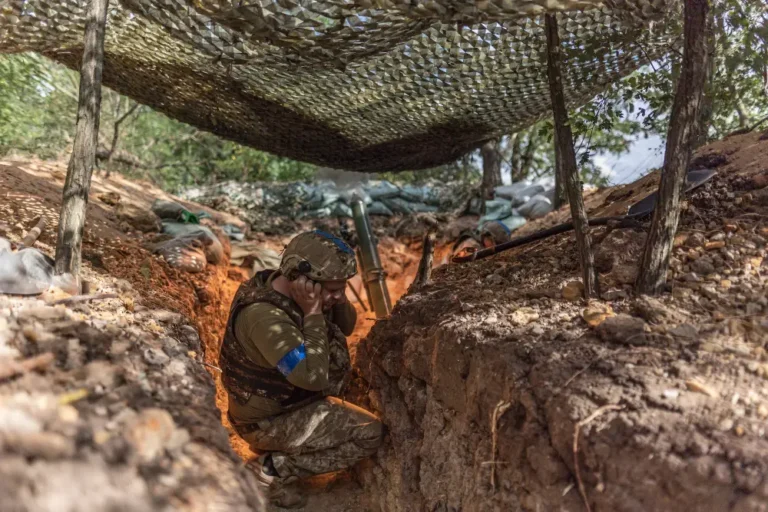US vs. Chinese replenishment ships: The workhorses that keep aircraft carriers operating
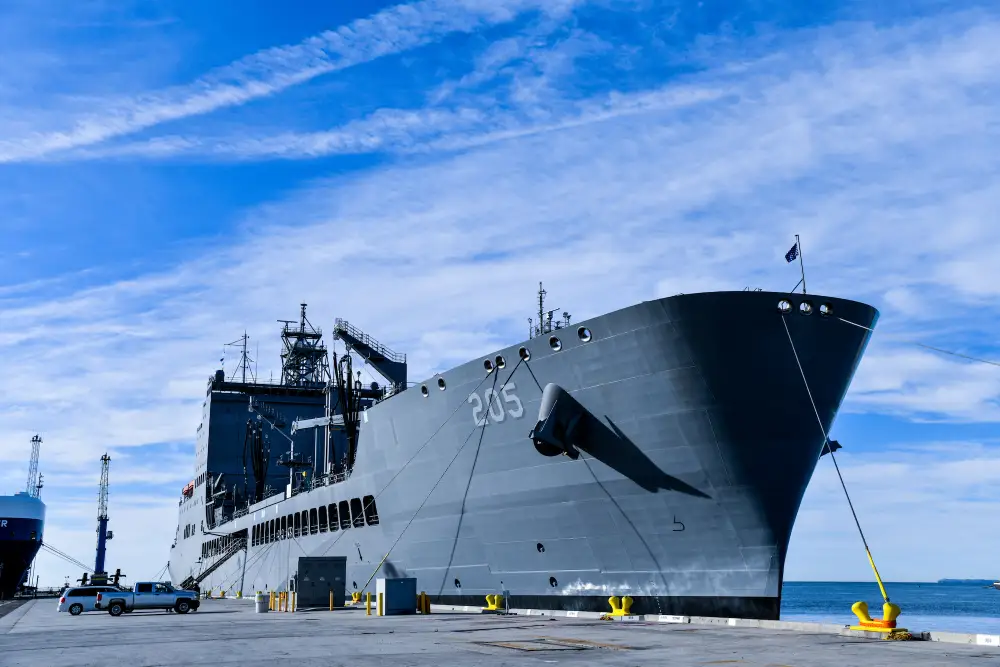
The US is building a new class of fleet oilers, named for the late civil rights icon John Lewis, to support the global operations of its carrier strike groups.
Involved in nearly every crisis since World War II, aircraft carriers have been called upon to assure allies, deter enemies, and strike directly at hostile targets.
Yet for all their importance, their missions would be impossible if not for the US Navy’s unsung workhorses: replenishment ships.
Replenishment ships loaded with food, fuel and bombs are the reason US carrier strike groups can stay at sea for months at a time. This capability is increasingly vital for the US Navy’s chief competitor, China. With the largest navy in the world, its lack of overseas military bases only makes the need for this capability greater.
But replenishment ships also form the weakest link in the chain of American and Chinese carrier groups. Often unarmed and full of explosive cargo, they are prime targets for any hostile force.
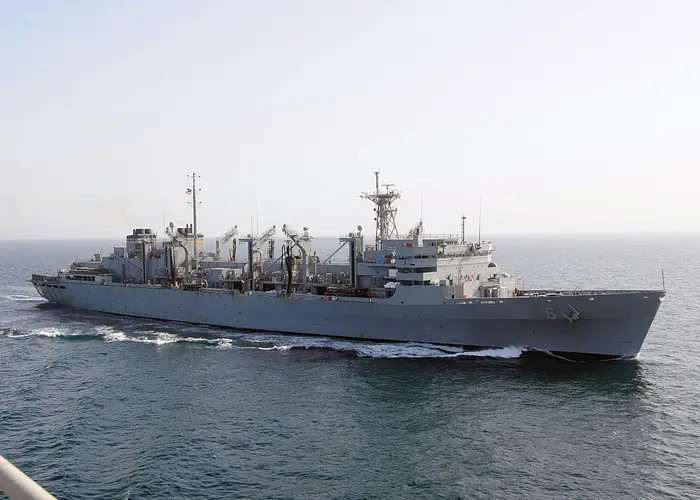
USNS Supply is one of the two largest combat logistics ships in the US Navy’s Military Sealift Command.
US replenishment ships
The US Navy’s Military Sealift Command’s Combat Logistics Force (CLF) operates 17 fleet replenishment oilers, 14 dry cargo/ammunition ships, and two fast combat support ships.
These ships are built to deliver wet cargo (mainly aviation and diesel fuel) and dry cargo like ordnance, food, and spare parts. Though US carriers are nuclear-powered, their escort ships still run on diesel, and their air wings require aviation fuel.
The most capable replenishment vessels in the CLF are the fast combat support ships of the Supply-class, the largest combat logistics ships in the MSC fleet.
Equipped with four cargo booms for loading cargo, they are capable of carrying 156,000 barrels of fuel, 1,800 tons of ordnance, 400 tons of refrigerated store, and 250 tons of other dry cargo.

Fleet replenishment oiler Henry J. Kaiser refuels a US warship via two hose lines suspended on a tensioned wire between the ships.
These ships have two primary means to transfer cargo: sling loads carried by helicopter or tensioned lines between the ships. They have five fuel-at-sea (FAS) stations that utilize long flexible refueling hoses that travel on the tensioned wire, and six replenishment at sea (RAS) stations that move supplies via the horizontal wire pulley systems on the tensioned line. In addition, the Supply-class ships have a helicopter hangar and deck with space for two helicopters at the stern, enabling helicopter transfer known as vertical replenishment, or VERTREP.
The FAS/RAS stations, combined with aerial resupply, enable Supply-class vessels to replenish up to four ships at once. Only two Supply-class ships, the USNS Supply and USNS Arctic, remain in service.
The backbone of the CLF’s refueling fleet are the Henry J. Kaiser-class fleet oilers. Built between 1984 and 1996, the ships are 677 feet long, displace around 41,000 tons, and can carry up to 159,000 barrels of fuel.
The Kaisers can refuel two warships simultaneously. They lack a helicopter hangar, but have a deck at the stern where helicopters from nearby ships can sling-load pallets.
Fourteen Kaisers are in active service with the MSC.
Though effective for refueling, the Kaiser-class has limited space for dry cargo — only enough for 586 pallets, including frozen and chilled food. The Navy relies on 14 Lewis & Clark-class dry cargo/ammunition ships to fill in the gap.
The Lewis & Clark-class ships can carry a massive 8,391 tons of dry cargo, including 1,716 tons of refrigerated stores. They also have tanks capable of carrying approximately 25,000 barrels of fuel.
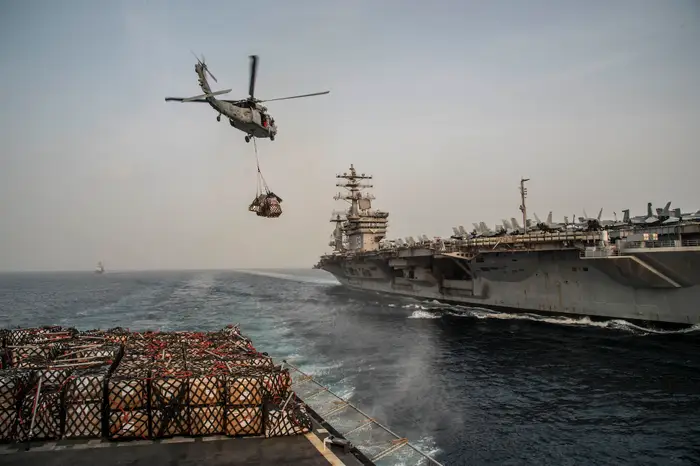
An MH-60S Sea Hawk helicopter delivers supplies to the USS Dwight D. Eisenhower from the fast combat support ship USNS Arctic.
The Kaiser-class replacement effort kicked off in earnest in 2016, when the Navy signed a design and construction contract with General Dynamics, a leading defense contractor and shipbuilder that reported $11.7 billion in revenue in its third-quarter earnings.
Five years later, the lead ship of the new John Lewis-class was christened.
The 746-foot-long, double-hull ships can carry 162,000 barrels of fuel, 6,675 tons of dry cargo, and 1,716 tons of refrigerated stores. A helicopter deck at the stern also enables VERTREP.
Three John Lewis-class oilers — USNS John Lewis, USNS Harvey Milk, and USNS Earl Warren — are in service, and a fourth, USNS Robert F. Kennedy, is set to begin sea trials soon. Another was recently launched and two more are under construction.
The class will soon become the main fleet oiler. An order for six ships was made in 2018, with options for three more exercised in 2022 and 2023. In September, the Navy signed a $6.7 billion contract for eight more John Lewis-class oilers with General Dynamics’s National Steel and Shipbuilding Company. The Navy hopes to have 20 of the vessels in total, supplemented by 13 yet-to-be-designed light replenishment oilers.
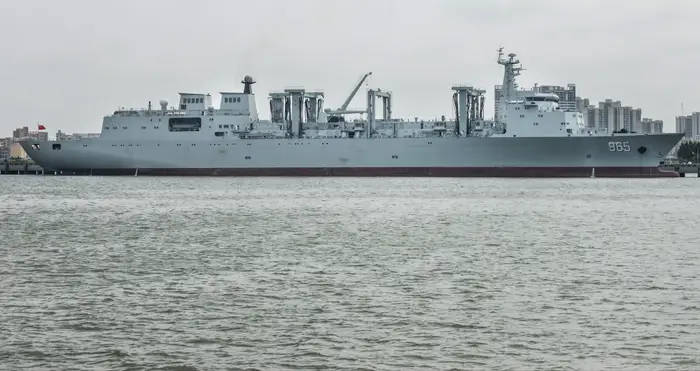
The Hulunhu fast combat support ship is part of a new class that was built to service China’s carrier strike groups.
China’s replenishment ships
The US Navy has over 100 years of experience building and operating replenishment ships. China’s experience began in the 1980s.
Its first replenishment ships could only carry about 10,500 tons of fuel. As China’s fleet grew in the 1990s, it searched for a stopgap measure and found it in the Qinghaihu, an oiler built in Ukraine that was intended for the Soviet Navy.
Ultimately, the Chinese opted to pursue a new design for its next replenishment ships: the Type 903-class oiler.
These ships can carry around 11,000 tons of cargo, including some 10,000 tons of fuel. Like the Qinghaihu, the Type 903s have a helicopter deck and helipad.
Nine ships were built between 2002 and 2018, all of which are in service.
The Type 903s form the backbone of China’s replenishment fleet, but they are not the most capable. That title goes to the PLAN’s Type 901-class fast combat support ships.
The ships, which NATO designated the “Fuyu-class,” are 787 feet long, displace 45,000 tons, have a helicopter deck and hangars, and are equipped with 5 FAS and 2 RAS stations. They are primarily meant to service China’s carrier groups and can keep up as they are propelled by four gas turbine engines.
The size, mission, and speed of the ships are comparable to the US Navy’s Supply-class. Two Type 901s have been built: the Hulunhu and the Chaganhu.

Replenishment ships like the Lewis and Clark-class dry cargo and ammunition ships are essential to carrier operations but are highly vulnerable to attack.
‘Weakest link’
The important role these ships play is hard to overstate.
Between October 2023 and May 2024 in support of Red Sea operations, for instance, USS Supply replenished US and allied ships 143 times, transferring over 87 million gallons of fuel and 14,928 pallets of supplies in the process.
The Henry J. Kaiser- and Lewis and Clark-class vessels also enabled the continuous presence of two carriers in the Middle East.
The PLAN’s oilers, meanwhile, have extended the reach of its warships. Its contributions to international anti-piracy efforts in the Gulf of Aden have, since 2008, almost always been made up of two surface combatants and one oiler, enabling each task force to stay on station for 4 months.
The new Type 901s are already proving their worth. Last year, the Type 901-class oiler Chaganhu supported the Shandong carrier group during a series of exercises near Taiwan, Guam, and in the South China Sea. This included 620 aircraft sorties in just 18 days, according to the Japanese Ministry of Defense.
In all, Shandong spent about as much time at sea as any US carrier in the western Pacific that year, due in no small part to its replenishment ships.
Yet replenishment ships are also the weakest link in each country’s carrier groups. The most obvious reason is that they are almost completely unarmed, making them defenseless. Their defenses are instead provided by escort ships.
They also face additional challenges unique to each country. The US, for instance, faces a manpower shortage, limited shipyard capacity, and an aging fleet with ships approaching the end of their expected service lives.
Military Sealift Command employs mostly civilian merchant mariners, but now has a recruiting issue of its own.
The manpower issue has been serious enough for MSC to propose sidelining 17 of its ships — including two Lewis & Clark-class ammo ships and one Kaiser-class oiler — so their crews could be sent to serve on other vessels.
The Kaiser-class itself is aging quickly. Four of the active oilers are already past their 35-year service lives, while one, USNS Pecos, departed for deactivation last month.
Ships can have their service lives extended, but American shipyards appear unable to keep up with demand for new ships and maintenance for active ones, with some estimating that the Navy is as many as 20 years behind in needed maintenance.
The backlog may be why only one Kaiser-class oiler, USNS Big Horn, was present in the Middle East during tensions between Israel and Iran in late September. This almost caused major problems when the ship accidentally ran aground and could no longer operate, forcing the Navy to rely on two Lewis & Clark-class ammunition ships for refueling duties despite their smaller capability. The incident exposed just how fragile UNREP networks can be.
China, meanwhile, has just 12 oilers despite having the world’s largest navy, which puts a considerable strain on those ships. Additionally, its logistical network is hampered by a lack of overseas naval bases, which can serve as refueling and resupply stations for the oilers.
China has the largest shipbuilding industry in the world, however, enabling it to quickly build more oilers and convert some of its merchant ships into replenishment ships. It has also been attempting to expand its “String of Pearls”— Chinese-controlled ports in countries across the Indian and Pacific oceans that could support military ships.


